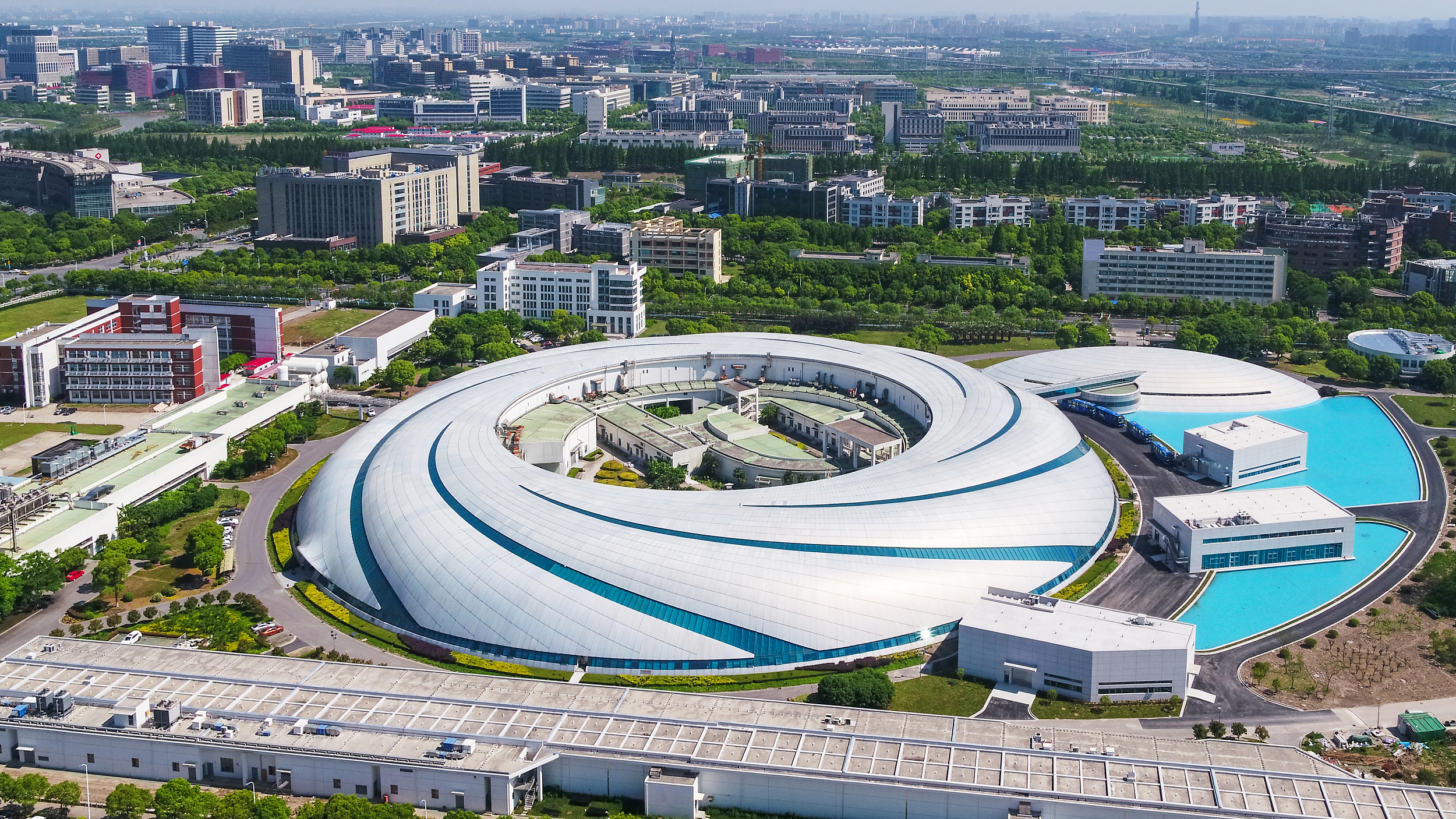China's Regional Sci-tech Innovation Shines

An aerial view of Shanghai Synchrotron Radiation Facility at Zhangjiang Hi-Tech Park, Pudong New Area. (PHOTO: VCG)
By ZHONG Jianli
China's regional sci-tech innovation capabilities have been enhanced over the past decade, and its multi-level, distinctive regional innovation system keeps improving. That's according to the China Regional Sci-Tech Innovation Evaluation Report 2022 released by Chinese Academy of Science and Technology for Development.
The report selects a series of indicators from five aspects: sci-tech innovation environment, sci-tech activity input, sci-tech activity output, high-tech industrialization, and sci-tech's contribution to economic and social development, to measure and evaluate the level of sci-tech innovation in 31 provinces (autonomous regions, or municipalities) of China.
In terms of their comprehensive sci-tech innovation levels, the 31 regions are divided into three tiers.
Shanghai, Beijing, Tianjin, Guangdong, Jiangsu and Zhejiang belong to the first tier of leading innovative regions, with their strong innovation levels higher than the national average.
The leading role of Beijing, Shanghai, and the Guangdong-Hong Kong-Macao Greater Bay Area as sci-tech innovation hubs has been further strengthened, according to the report.
Beijing has accelerated its efforts to build a national sci-tech innovation center with global influence. In 2022, its comprehensive sci-tech innovation index reached 86.2 points, ranking second in China. Its R&D input intensity was 6.44 percent, ranking first in China, while its turnover of exported technologies was up to 631.62 billion RMB, accounting for 22 percent of the national total.
The spillover effect of Beijing's innovation capacity is obvious. The value of technology contracts exported from Beijing to Tianjin and Hebei reached 34.75 billion RMB, an increase of 22.9 percent over the previous year.
Shanghai has ranked first for many years in terms of its comprehensive sci-tech innovation level, and its financial investment in sci-tech activities also topped all regions.
Led by Shanghai, the Yangtze River Delta region has become one of the most competitive regional communities in China. The collaborative innovation system of the region has been continuously optimized, and its level of openness and innovation also continues to improve.
The Guangdong-Hong Kong-Macao Greater Bay Area also performed well according to the report. Guangdong's comprehensive sci-tech innovation level ranked fourth in China. Its manpower input in sci-tech activities, technological achievements commercialization, and capital productivity, all rank first in China.
Meanwhile, the World Intellectual Property Organization says the "Shenzhen-Hong Kong-Guangzhou" sci-tech cluster has ranked second in the world for many consecutive years.
In addition, the report says that sci-tech has played a leading role in promoting the development of regions along the Yangtze River Economic Belt, while the sci-tech innovation capacity of regions along the Yellow River Basin has steadily improved, and can support ecological protection and high-quality development.






